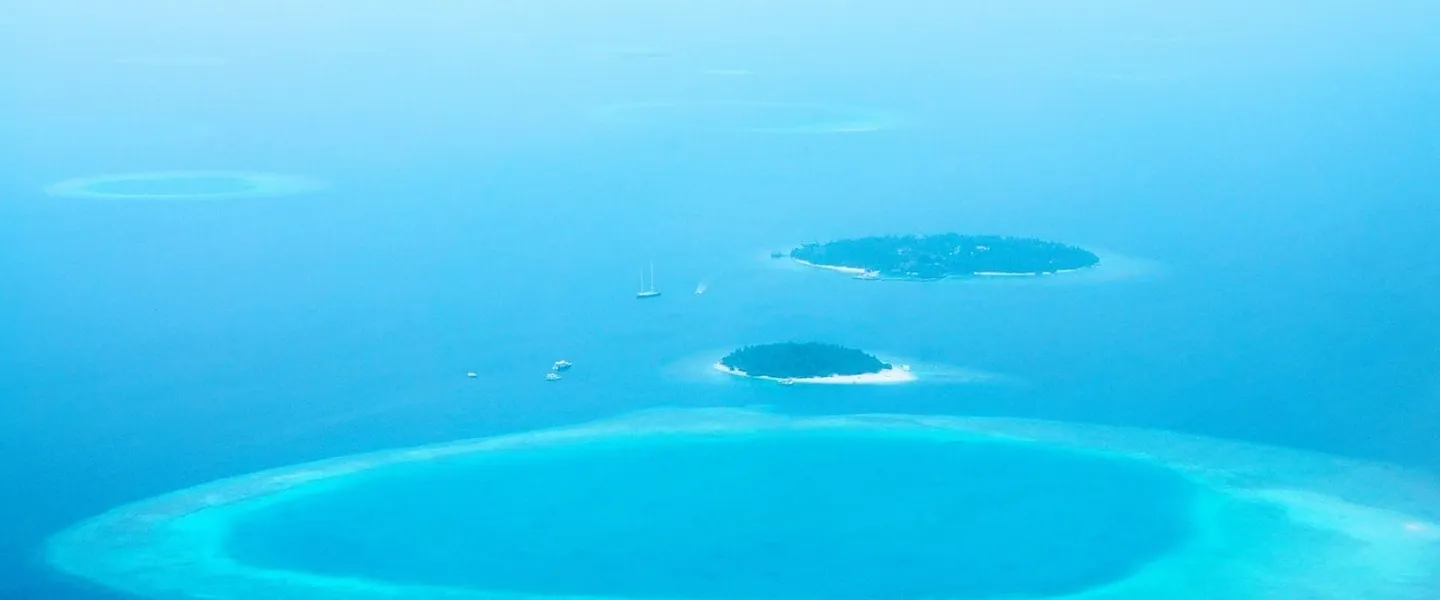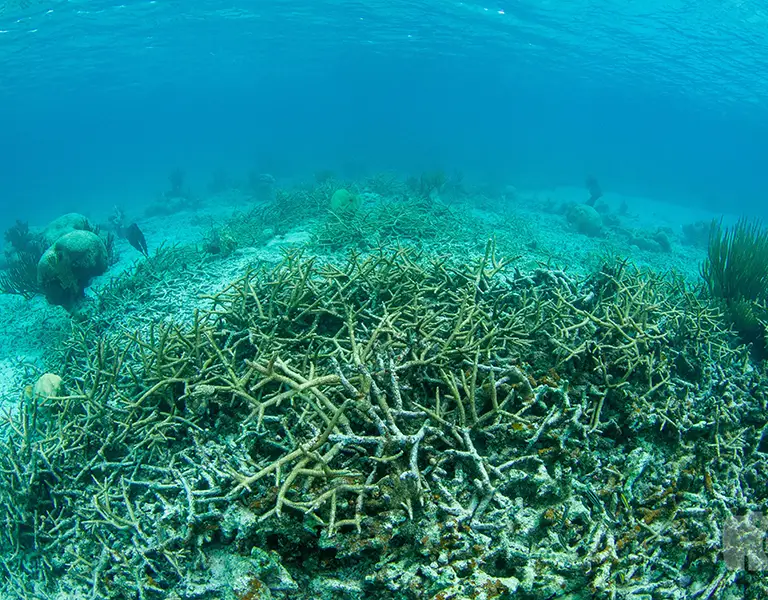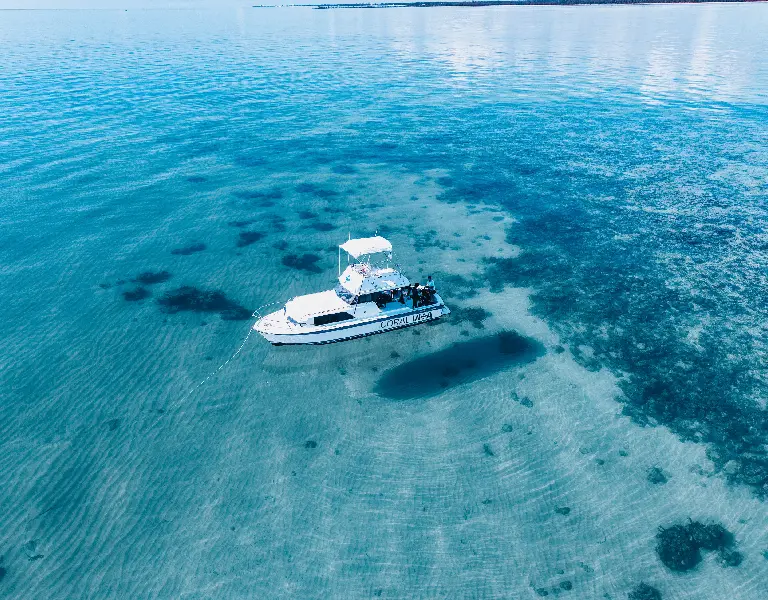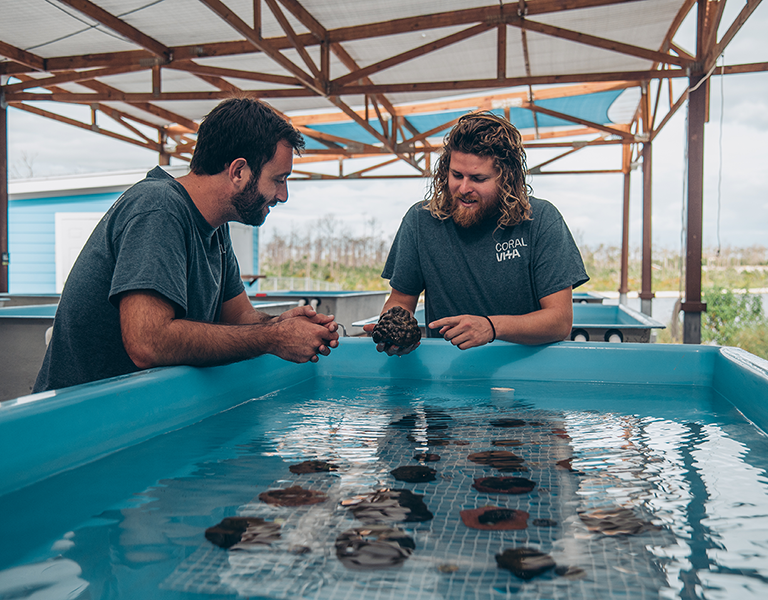An atoll stands as one of Earth’s most remarkable natural formations—a ring-shaped coral reef encircling a lagoon where once stood a volcanic island. These living geological wonders represent the resilience and adaptability of coral ecosystems over vast stretches of geologic time.
Key Takeaways
- Atolls are ring-shaped coral reef systems that form around subsiding volcanic islands, creating a central lagoon
- They are the product of a long-term geological process involving volcanic activity, coral reef growth, and island subsidence
- Atolls provide critical habitat for marine biodiversity despite challenging conditions like limited land area and few natural resources
- Climate change and sea level rise pose existential threats to atoll nations and ecosystems, making coral restoration efforts increasingly vital
- Charles Darwin first correctly hypothesized the formation process of atolls in 1842, describing the subsidence model that remains foundational to our understanding
The Living Ring: What Is an Atoll?
An atoll is a ring-shaped reef structure, often including multiple small islets, that surrounds a central lagoon where a volcanic island once stood. These remarkable formations create some of the most visually stunning ecosystems on Earth’s surface, often with vibrant coral reefs embracing a still, shallow lagoon. Seen from an aerial view, atolls appear as perfect rings or partial circles with small tongues of white sandy beaches and green vegetation creating a striking contrast against the deep blue of the open sea and the lighter turquoise of the protected lagoon they surround.
The word “atoll” derives from the Maldivian word “atholhu or atolu” reflecting the prominence of these formations in the Indian Ocean, particularly in the Maldives archipelago where they form the structural foundation of the country1. Atolls play critical roles in marine biodiversity, oceanic island cultures, and as sentinels of climate change.
Birth From Fire: The Volcanic Island Origins
The formation of an atoll represents one of Earth’s most fascinating geological stories—a dance between volcanic forces, biological growth, and the inexorable pull of gravity over millions of years. This process follows a predictable sequence first correctly hypothesized by Charles Darwin in 1842, known as the subsidence model2.
Every atoll begins its life cycle with a volcanic eruption on the ocean floor.. This volcanic activity creates the initial island that will serve as the foundation for coral colonization.
These oceanic islands typically form in chains, following the tectonic plates movement over hotspots in Earth’s mantle. Classic examples include the Hawaiian Islands and the Society Islands in the Pacific Ocean, which represent different stages of this process along the same volcanic chain. While the newest islands continue to grow through volcanic activity, the older islands gradually become dormant, setting the stage for coral reef development3.
Once volcanic activity ceases and the island stabilizes, coral larvae carried by ocean currents settle on the island underwater slopes and begin to grow.
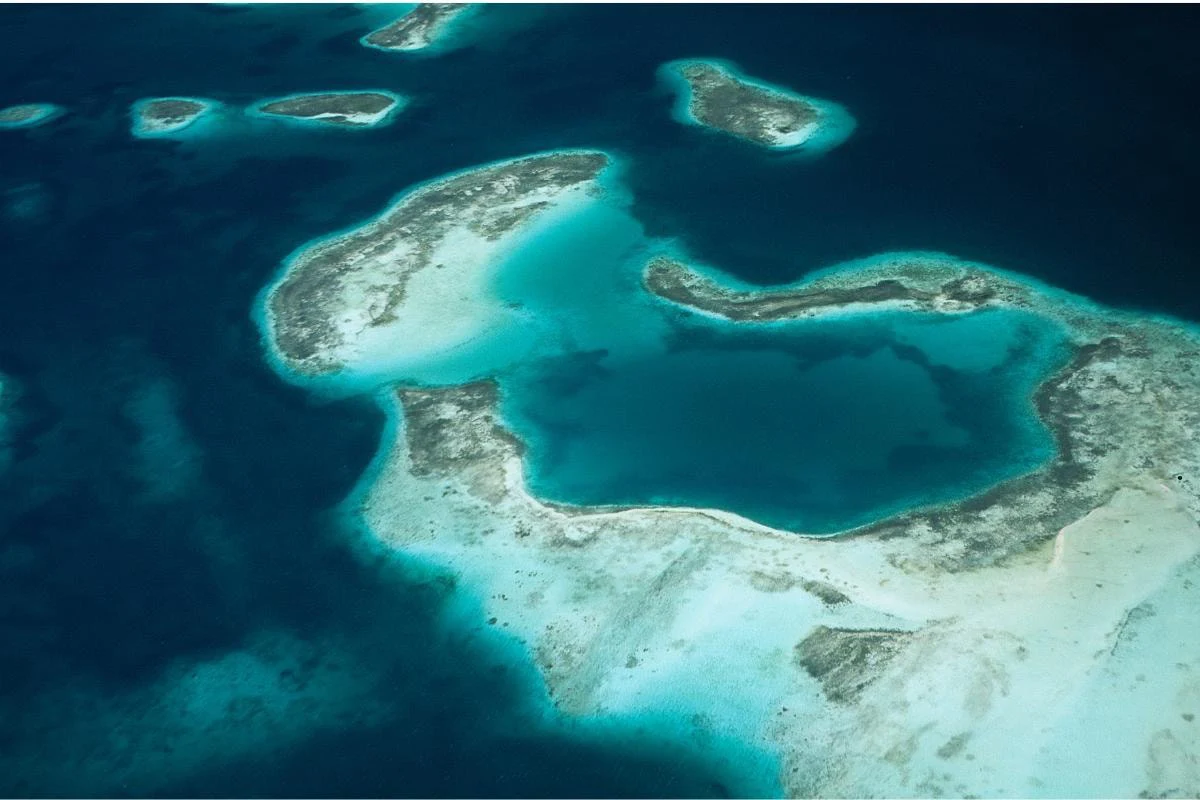
Over time, the weight of the volcanic island causes it to slowly sink into the flexible oceanic crust beneath—a process geologists call subsidence4.
As the island subsides, the living coral reef continues to grow upward toward the sunlight, maintaining its position near the ocean surface. Eventually, a wide channel forms between the sinking island and the growing reef, creating what’s known as a barrier reef with a lagoon between the reef and the island.
In the final stage, the original volcanic island completely disappears beneath the surface, leaving only the ring-shaped coral reef surrounding a central lagoon—the atoll. This entire process typically takes between 1 and 30 million years, depending on factors like coral growth rates and the speed of island subsidence5.
Darwin’s subsidence theory has been confirmed by modern scientific research, including deep drilling expeditions that have found volcanic rock beneath coral atolls at depths consistent with his hypothesis. This elegant explanation remains one of the most significant early contributions to our understanding of Earth’s dynamic geological processes.
When Mountains Sink: How a Volcanic Island Erodes
While subsidence plays the primary role in atoll formation, erosion also contributes significantly to the process. As a volcanic island ages, several forces work together to gradually wear it down:
- Weathering: Rainfall, wind, and temperature fluctuations break down the volcanic rock
- Water erosion: Streams and rivers carry sediment from higher elevations to the coast
- Wave action: Ocean waves continuously pound against coastal areas, undercutting cliffs
- Chemical processes: Volcanic rocks interact with water and atmosphere, weakening their structure
Together, these forces gradually reduce the island’s elevation and mass while expanding the shallow submarine platform around it. As the volcanic island erodes, the coral reef continues to grow, eventually leading to the characteristic ring-shaped formation.
In some cases, especially in areas with dramatic sea level changes, a volcanic island may be completely eroded to below sea level without significant subsidence. However, most classic atolls in the Pacific Ocean formed primarily through the subsidence process Darwin described, with erosion playing a secondary but important role.
Perfect Circles: The Ring-Shaped Coral Structure
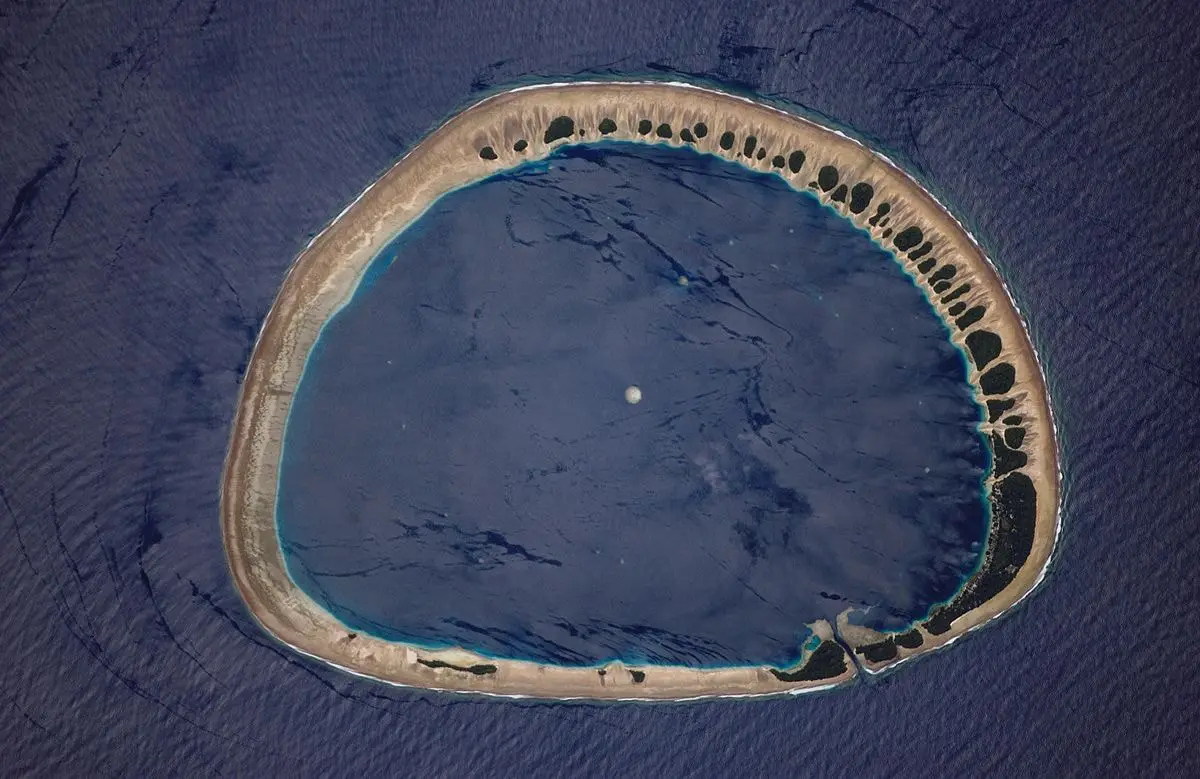
The distinctive ring shape of atolls has fascinated scientists and travelers for centuries. This circular or oval formation happens naturally as corals grow evenly around the perimeter of a volcanic island. As the island subsides, the coral continues growing upward in this circular pattern, eventually creating the perfect ring that defines an atoll.
The complete atoll structure includes several key components:
- Reef rim: The main ring-shaped coral structure that breaks the surface
- Reef flat: A relatively level coral platform that experiences exposure during low tides
- Lagoon: The central body of protected water surrounded by the atoll
- Islands (motus): Small patches of land formed by accumulated coral sediment
- Channels (hoa): Breaks in the reef rim allowing water exchange
These ring-shaped formations vary widely in size, from tiny atolls just a few kilometers in diameter to massive formations like Kwajalein Atoll in the Marshall Islands, which encompasses a lagoon over 97 kilometers long. The depth of lagoons similarly ranges from shallow pools to surprisingly deep basins exceeding 50 meters.
From space, these ring-shaped coral structures appear as perfect circles dotting the oceans, their symmetry standing as testimony to the balanced forces of nature that created them. Their visual perfection has made them iconic symbols of tropical paradise and natural wonder.
The Building Blocks: Coral Reef Foundations
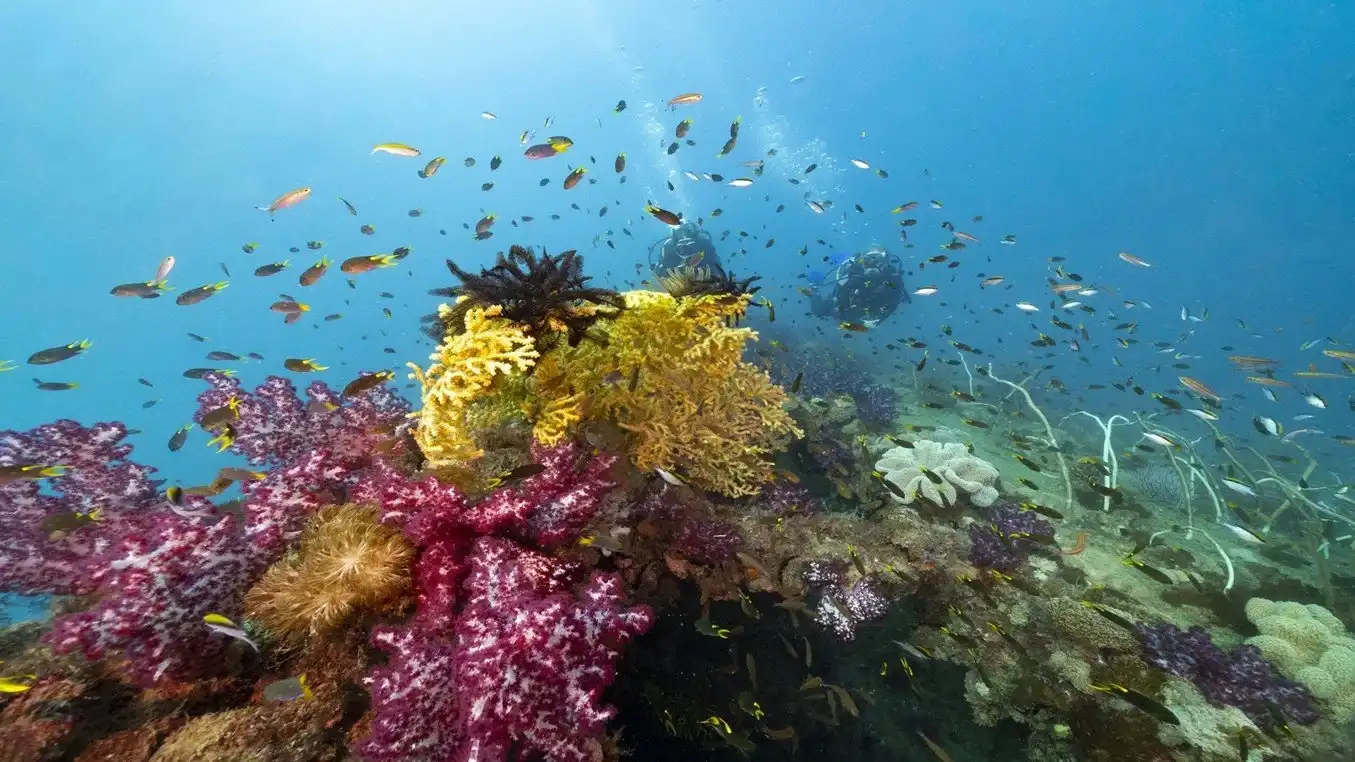
At the heart of every atoll is a coral reef ecosystem. These living structures are built by tiny colonial organisms called hermatypic corals—the reef-building variety that form the backbone of coral ecosystems worldwide. Unlike their soft coral cousins, these hard corals secrete calcium carbonate skeletons that accumulate over thousands of years to form the massive structures we know as coral reefs6.
Corals exist in a symbiotic relationship with photosynthetic algae called zooxanthellae, which provide nutrition to the coral polyps while gaining protection in return. This partnership enables corals to thrive in the nutrient-poor waters typically found in tropical oceans, creating the foundation for extraordinarily diverse marine ecosystems.
Life in the Ring: What an Atoll Surrounds

At the heart of every atoll lies its lagoon—a body of sheltered water surrounded by the protective ring of coral reef. These lagoons represent unique marine environments with characteristics distinct from both the open ocean and typical coastal waters.
Atoll lagoons vary dramatically in size, depth, and characteristics. Some are relatively shallow with sandy bottoms, while others can reach surprising depths with complex underwater topography. The protected environment creates calmer waters with reduced wave energy, allowing for the development of diverse ecosystems distinct from the high-energy reef crest facing the open ocean.
The water within atoll lagoons typically exhibits:
- Higher temperatures than surrounding ocean waters
- Different salinity levels due to evaporation and freshwater input
- Unique circulation patterns created by tides flowing through reef channels
- Distinct water chemistry influenced by the surrounding reef metabolism
These special conditions create microhabitats that support specialized communities of marine life. Seagrass meadows often flourish in sandy lagoon bottoms, providing critical nursery habitat for fish species. Patch reefs—isolated coral formations—frequently dot the lagoon interior, creating additional habitat complexity7.
For island communities, lagoons serve as critical resources—protected fishing grounds, safe harbors for boats, and natural barriers against storm surge and tsunami waves. This protective function helps explain why atolls, despite their limited land area and challenging conditions, have supported human settlements for thousands of years.
The Blue Heart: What Is the Water Called in an Atoll?
The body of water encircled by an atoll’s coral ring carries the simple but descriptive name “lagoon”—derived from the Italian word “laguna,” meaning a body of shallow water separated from the larger sea. These lagoons represent one of the most distinctive features of atoll geography and serve as the blue heart of these remarkable ecosystems8.
Atoll lagoons connect to the surrounding ocean through channels or passes that cut through the reef rim, allowing for water exchange during tidal cycles. The size and number of these channels significantly influence water circulation within the lagoon, affecting everything from temperature and salinity to nutrient availability and marine life.
Navigators throughout history have appreciated atoll lagoons as natural harbors, offering protection from ocean swells and storms. This feature made atolls strategically important during World War II, when many Pacific atolls became critical military bases. Most notably, Bikini Atoll in the Marshall Islands later became the site for nuclear weapons testing, including the first hydrogen bomb in 1952, leaving a lasting environmental impact that continues to affect the ecosystem today9.
For marine scientists, these lagoons serve as natural laboratories—unique environments with clear boundaries where ecological processes can be studied in relative isolation. Their enclosed nature makes them particularly valuable for understanding how coral reef ecosystems respond to environmental changes, including the increasing threats posed by climate change.
Paradise Under Pressure: Challenges Facing Atolls

Despite their incredible natural beauty, atolls represent some of the most vulnerable ecosystems on Earth. Their existence depends on a delicate balance of geological and biological processes easily disrupted by human activities and environmental changes.
The most existential threat comes from sea level rise associated with climate change. With most atoll islands rising just a few meters above sea level, even modest increases threaten to submerge them entirely. Nations like the Maldives, Kiribati, Tuvalu, and the Marshall Islands—comprised primarily of atolls—face the very real possibility of becoming uninhabitable within decades10.
Beyond sea level rise, atolls face numerous other challenges:
- Coral bleaching from rising ocean temperatures threatens the living reef structure
- Ocean acidification weakens coral skeletons and slows reef growth
- Limited fresh water on atoll islands, often depending on rainwater collection
- Poor soil quality restricts agriculture and food security
- Few natural resources for building materials or economic development
- Limited land area creates population pressure on fragile environments
- Waste management challenges due to confined space and porous coral substrate
These challenges make atoll communities particularly vulnerable to environmental changes while limiting their adaptive capacity. Many atoll nations have become leading voices in international climate negotiations, advocating for aggressive emissions reductions to ensure their continued existence.
Global Distribution: Where Atolls Form
Atolls aren’t distributed evenly across Earth’s oceans but instead concentrate in specific regions with the right geological conditions. The vast majority exist within the tropical waters of the Pacific and Indian Oceans, with a smaller number in the Caribbean Sea.
The Pacific Ocean hosts the greatest concentration of atolls, particularly within:
- Marshall Islands: Home to numerous atolls including Kwajalein, the world’s largest atoll by lagoon size
- Tuamotu Archipelago in French Polynesia: The world’s largest chain of atolls
- Caroline Islands: Including Truk (Chuuk) Atoll with its famous World War II shipwrecks
- Line Islands: Remote atolls straddling the equator in the central Pacific
The Indian Ocean contains fewer but still significant atoll formations, most notably:
- Maldives: A nation comprised entirely of atolls and coral islands
- Chagos Archipelago: Including the Great Chagos Bank, the world’s largest atoll structure by total area
- Seychelles: With several prominent atolls including Aldabra, home to giant tortoises
In contrast, true atolls are rare in the Atlantic Ocean due to different geological conditions and coral species. The Caribbean has some structures resembling atolls, like Glover’s Reef off Belize, but these often formed through different processes than classical Pacific atolls.
The northernmost atoll in the world is Kure Atoll in the Hawaiian archipelago, located just below what scientists call the “Darwin Point”—the geographical threshold beyond which coral growth rates cannot keep pace with erosion and subsidence, making atoll formation impossible11.
Conservation Challenges and Restoration Efforts
The unique ecosystems of atolls face unprecedented threats to coral reefs requiring innovative conservation approaches. Rising sea levels, increasing storm intensity, and coral bleaching events from warming oceans place these delicate systems under immense pressure. For inhabitants of atoll nations, these aren’t abstract environmental concerns but existential threats to their homes and cultural heritage.
Traditional conservation methods prove challenging on atolls due to their limited land area, isolation, and economic constraints. However, several promising approaches have emerged:
- Marine Protected Areas establish zones where fishing and other extractive activities are limited
- Reef restoration projects actively rebuild damaged coral structures to enhance resilience
- Climate adaptation planning helps communities prepare for inevitable changes
- Sustainable tourism models generate economic benefits while protecting fragile ecosystems
Organizations like Coral Vita are pioneering innovative coral restoration techniques that could prove particularly valuable for atolls. By growing climate-resilient corals using advanced land-based aquaculture methods, then transplanting them to degraded reef systems, these approaches offer hope for strengthening the living infrastructure that makes atoll existence possible12.
Successful conservation of atolls requires acknowledging their unique interconnected nature—where land, lagoon, and reef function as a single integrated system. This holistic perspective, often aligned with traditional ecological knowledge held by atoll communities, offers the best path forward for preserving these natural wonders for future generations.
Conclusion: The Future of Earth’s Ring Islands
Atolls stand as some of our planet’s most extraordinary natural formations—living monuments to the incredible interplay between geological processes and biological persistence over millions of years. From their fiery volcanic beginnings to their current incarnation as coral rings embracing tranquil lagoons, they represent one of nature’s most remarkable transformation stories.
As we look toward the future, atolls face unprecedented challenges from climate change, ocean acidification, and human activities. Their very existence depends on healthy coral ecosystems capable of growing fast enough to keep pace with rising seas—a race that many may ultimately lose without significant global action to address climate change.
Yet atolls and their resilient communities have weathered challenges before. Through innovative conservation approaches, sustainable development practices, and cutting-edge restoration techniques like those pioneered by Coral Vita, these unique ecosystems may find paths to endure. Their fate is inextricably linked to our broader relationship with the ocean and planet—a relationship that must evolve toward greater responsibility and stewardship.
The story of atolls—spanning millions of years from volcanic eruption to coral ring—reminds us of nature’s incredible capacity for transformation and adaptation. How their story continues depends largely on the choices we make today to protect and restore these living geological wonders for generations to come.
About Coral Vita
Coral Vita is a mission-driven company dedicated to restoring our world’s dying and damaged reefs. Using innovative land-based farming techniques, Coral Vita grows diverse and resilient corals in months instead of the decades they take in nature. These corals are then transplanted into threatened reefs, helping to preserve ocean biodiversity while protecting coastal communities that depend on healthy reefs for protection, food, and income].
Founded by environmental entrepreneurs Sam Teicher and Gator Halpern, Coral Vita’s high-tech coral farms incorporate breakthrough methods to restore reefs in the most effective way possible. In 2021, the company was recognized as the inaugural winner of Prince’s William’s Revive Our Oceans Earthshot Prize Winner for their pioneering work in coral restoration.
To learn more about Coral Vita’s work or to get involved in coral reef conservation efforts, visit their website at www.coralvita.co or contact them directly through their Contact Us page.
Frequently Asked Questions
What exactly is an atoll?
An atoll is a ring-shaped coral reef that encircles a lagoon, typically forming after a volcanic island subsides below sea level. The living coral reef continues growing upward as the island sinks, eventually creating the characteristic ring structure with a central lagoon where the island once stood.
How long does it take for an atoll to form?
Atoll formation is an extraordinarily slow process that typically takes between 1 and 30 million years. The process begins with coral growth around a volcanic island and continues through the island’s subsidence, with coral reefs growing upward to maintain their position near the ocean surface as the volcanic foundation sinks.
Which country has the most atolls?
The Republic of the Maldives in the Indian Ocean contains the highest concentration of atolls of any nation, with its entire territory consisting of 26 atolls comprising 1,192 coral islands. Other countries with numerous atolls include the Marshall Islands, Kiribati, and French Polynesia in the Pacific Ocean.
Are atolls endangered by climate change?
Yes, atolls face existential threats from climate change impacts. Rising sea levels threaten to submerge low-lying atoll islands, while ocean warming causes coral bleaching that damages the living reef structure. Ocean acidification further weakens coral skeletons, potentially preventing reefs from growing fast enough to keep pace with rising seas.
References
- https://en.wikipedia.org/wiki/Atoll ↩︎
- https://www.darwinproject.ac.uk/commentary/geology/darwin-coral-reefs ↩︎
- https://darwin-online.org.uk/converted/published/1842_Coral_F271/1842_Coral_F271.html ↩︎
- https://oceanservice.noaa.gov/education/tutorial_corals/coral04_reefs.html ↩︎
- https://oceanservice.noaa.gov/education/tutorial_corals/media/supp_coral04a.html ↩︎
- https://ocean.si.edu/ecosystems/coral-reefs/birth-atoll ↩︎
- https://www.usgs.gov/media/images/atoll-development ↩︎
- https://www.etymonline.com/word/lagoon ↩︎
- https://whc.unesco.org/en/list/1339/ ↩︎
- https://www.nature.com/articles/s41558-018-0176-z ↩︎
- https://link.springer.com/article/10.1007/BF00286537 ↩︎
- https://www.coralvita.co/our-work ↩︎
